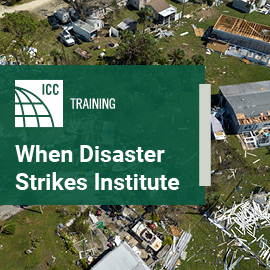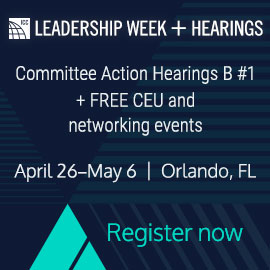
Why Code Enforcement Officers Are The “Lifeline” To A Better Community
Code enforcement officers do so much more than code enforcement – they protect and enrich communities in a way that no other can.
This article is Part 1 of a three-part series exploring the roles of code enforcement officers. Stay tuned for Part 2 and Part 3 which will be published in the coming months.
Code enforcement officers are the unsung heroes of the building safety industry. While people may understand the need for permits and inspections, many are not aware of the important work that code enforcement officers do in communities all across the country. Their job goes above and beyond tall grass and abandoned cars. As building safety professionals, they have the ability to serve and protect their towns in a way that no other can.
“We have eyes on everything,” said Rachel Patterson, Senior Code Enforcement Officer for the City of Westminster, Colorado and Vice President of the International Code Council’s Colorado Chapter. She said it’s important to understand the role of code enforcement in a community because it is the key to everything else.
“A good code enforcement officer knows the resources for the things that the community needs,” Patterson added. “When they’re out there enforcing code and they come across someone who doesn’t have a furnace or water heater, or running water, a code enforcement officer is typically there to bridge that gap in providing the resources. They are really that lifeline and key to better solutions for the community.”
Patterson believes that everything that goes into achieving compliance – the ultimate goal of every code enforcement officer – is the “magical” part of the job.
Read about the importance of building and code enforcement collaboration here.
“A code enforcement officer is there, for example, to do the basic job of indicating what a blight nuisance violation might be, but in doing that, you could find something far bigger,” Patterson continued. “You may find a very devastating hoarding situation that has turned extremely dangerous to the safety of the individual in the home and the surrounding community.”
People don’t typically realize how severe hoarding can be until they experience it firsthand. Most building safety professionals will come across it at least once in their career, especially if enforcement is required.
Dan Carlson, Building Official for the City of Wilsonville, Oregon, has seen his share of hoarding tragedies, including an infestation of more than 500 rats. But one of the worst involves a woman who fed and welcomed stray cats into her home.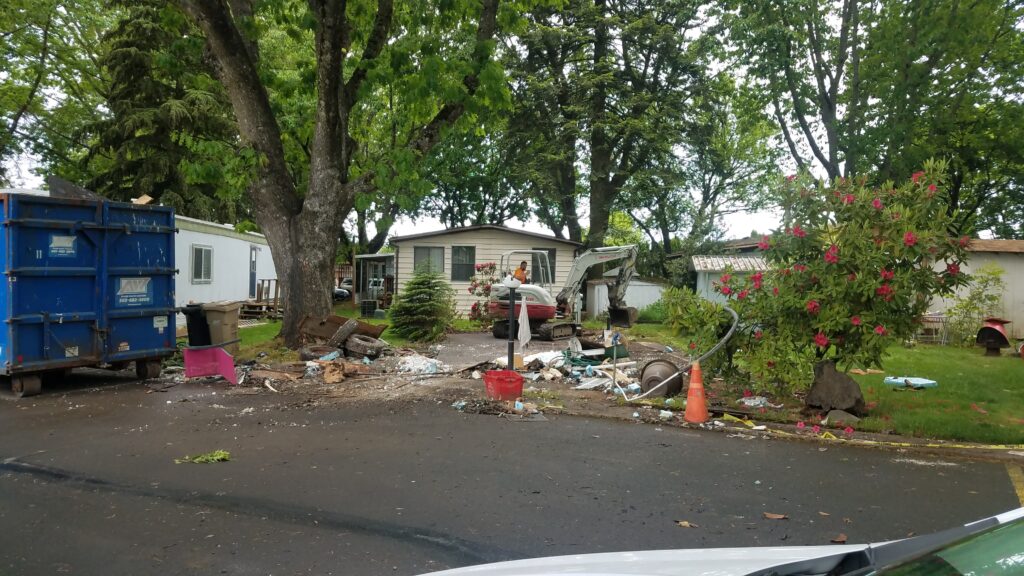
“They had gotten so numerous, and the smell was so bad, it forced her to sleep on her front porch,” said Carlson. “We got a call from the mail carrier, ‘I deliver mail here, the mail is piling up, but the stench coming out of this house is just awful.’”
Carlson found that the home did not meet the International Property Maintenance Code® (IPMC); given the dangers it presented it was ultimately ordered to be demolished. The land was later sold, and a new house was built in its place.
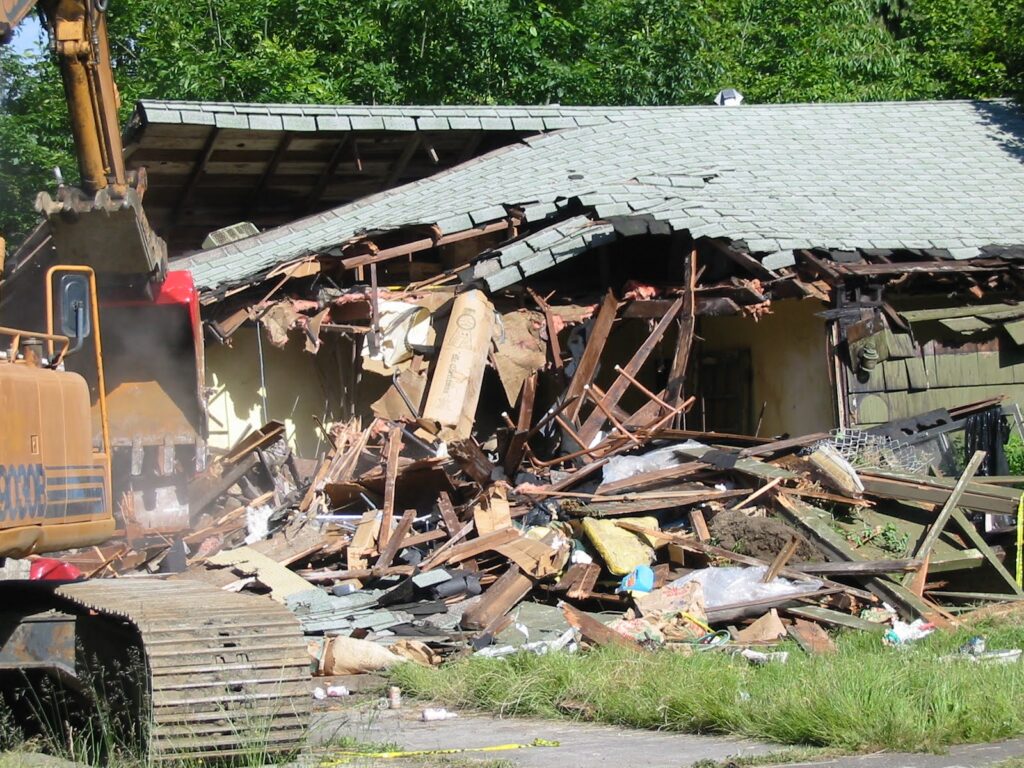
“When I tell these stories, there’s a real human part of this and my heart goes out to people who are having mental struggles or some sort of illness,” said Carlson. “I think, ‘How can I help this person?’ That’s what we all have to keep in mind. You can’t just go in and do your job as a code professional and ignore the human aspect of it.”
Making a Difference You Can See and a Change You Can Feel
Mitch Hammes, a code enforcement veteran, consultant and founder of That Code Enforcement Guy, a Code Council Preferred Education Provider, has seen his share of urban blight. But he never wanted to portray the “force” side of enforcement. He prefers to take a solutions-oriented approach and, as a result, has been able to greatly help those who need it most.
“I’ve had lots of situations where there’s an elderly couple and maybe the husband is infirmed and can’t do the work,” said Hammes. “They don’t have kids in the area, they don’t have resources. In those situations, I love calling on churches and other community support to solve a problem for somebody who was really deserving of it. It helped them stay in their home.”
When Hammes was the Neighborhood Services Manager for the City of Colorado Springs, Colorado, he was tasked with finding solutions to the blight of an entire neighborhood. He and city code enforcement worked with volunteer groups and started a Neighborhood Pride Program to make physical improvements to several dozen homes.
“The one that sticks out to me involved a disabled veteran,” Hammes recalled. “They had a grass front yard, and it was overgrown with weeds. There were a few little bushes that were dying. And he had one or two artificial legs, so he wasn’t able to do it. His wife was elderly. We actually had a volunteer group pull out all the grass, put down a plastic weed barrier, and gave him a rock front yard so they didn’t have to worry about it. We also planted a few low water use bushes so that the natural rain and snow would water them and keep them alive.”
As Hammes and his volunteers put the plan together, they learned that the veteran’s disability made it impossible for him to go upstairs in his two-story home. He slept downstairs in the living room while his wife slept upstairs in their bedroom.
“That really tugged on our heartstrings,” Hammes added. “They were just a wonderful couple, so one of the volunteer groups approached the homebuilder’s association. We ended up getting a chair lift, materials and labor donated. They were not cheap. I think the total cost of the project was $10,000 just to have the chair lift installed, so he could get upstairs and sleep in the bed with his wife. That’s one that I’m especially proud of.”
Protecting Your City from Attractive Nuisances Prevents Future Crime
Pete Roque, National Director of Code Enforcement at 4LEAF, is proud of the trickle-down benefits of code enforcement. He has found that when you get rid of problematic properties, such as old and abandoned buildings, you get rid of the underlying issues.
“You get rid of the drug use, you free up your police officers to do other things,” Roque explained. “You reduce places where someone may congregate to commit crime. You eliminate these attractive nuisances, and I think that’s where the benefits of code enforcement really lie.”
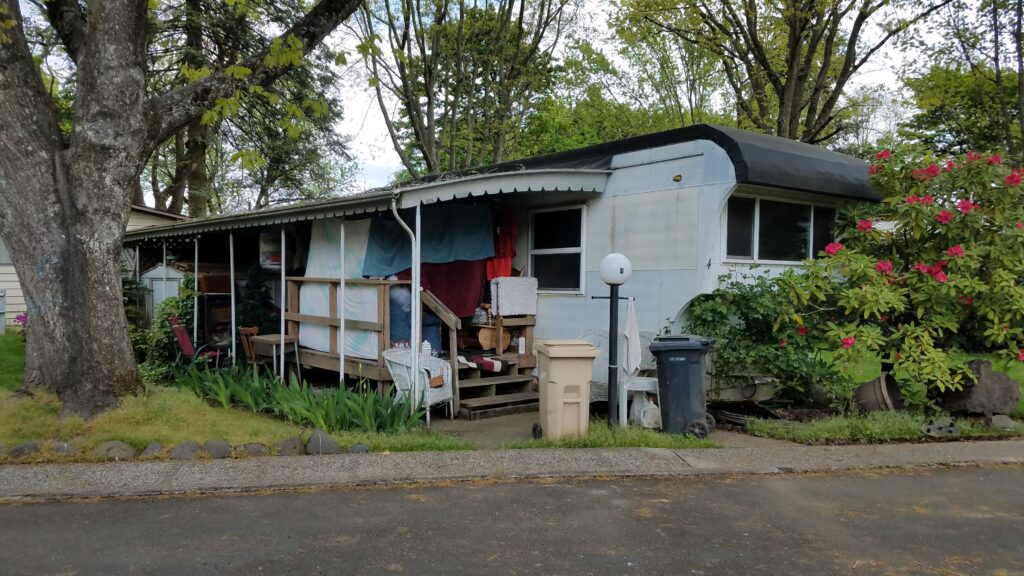
Read about how to use building code to eliminate blight and combat crimes here.
One attractive nuisance was an old hospital in Gardena, California that had been vacant for 20 years. All of the metal had been stripped from the building, and even though it had no power or running water, people moved into the basement. But they weren’t the only tenants – birds moved in as well and drenched the place in droppings.
Roque found several safety violations within the home. The owner ultimately ended up demolishing it. After that, the people living there, and the underlying issues, went away. But this was just one of many instances in which code enforcement officers used the code and/or found creative ways to solve problems:
- Eliminating Unpermitted Home Rentals: Roque also assisted in addressing the issues caused by a homeowner who built a makeshift RV park on the property. Located in Sylmar, a suburban neighborhood that spans Los Angeles and San Fernando, the homeowner caused problems for the community when the RV’s sewer lines began to overflow. San Fernando took aggressive action by enforcing International Code® (I-Code) requirements, the homeowner cleaned up that part of the parcel and the city closed the case.
- Helping Others Help Themselves: Patterson helped create a tool loan program for a Denver community that allows residents to borrow tools to maintain their yard and home exterior and ensure it remains in compliance with the code.
- Reducing Unnecessary Expenses: Abandoned vehicles were once the lowest priority for Colorado Springs, but the state towed an average of 290 vehicles every month at a cost of roughly $200 each. When code enforcement was given the chance to reduce this burden and lower the city’s expenses, the department deployed its officers to investigate, and Hammes was among them. They’d run the plates, locate the owners and personally reach out. This effort quickly paid off – in the first six months of starting this initiative, Colorado Springs only towed a total of 40 vehicles.
Minimizing Confrontation Improves Safety, Respect and Compliance
While most cases don’t involve drugs or the need to alert police, code enforcement must still consider the safety of their situation. They are, after all, asking people to become compliant and fix their violation, and not everyone is eager to hear that they have done something wrong.
“When I think about safety in code enforcement, I always relate it back to the [consumer] and the person doing the job and how they’re going to carry themselves,” said Patterson. “I’ve been doing code enforcement for 17 years, most of which have been in the field. I think I can count on one hand how many times I felt unsafe, and I was still able to get myself out of those situations. That’s due to years and years of understanding people, understanding communication styles and really putting that effort into connecting with the community.”

Patterson recommends that code enforcement officers protect themselves, and improve their outcomes, by taking advantage of communications and self-defense training opportunities whenever possible. She said you can dress a certain way or look at the culture or generation in a particular area but noted that safety and success “really comes back to treating people with respect.”
“Treating people with respect may not get the result you’re looking for, but it’s typically not going to end in violence unless this person had no intention of a good solution,” said Patterson. “But that’s not typical. In the typical situation where I live, it’s truly how you interact with that individual in those first 10 seconds.”
If all else fails, code enforcement officers should never feel that they can’t walk away from a dangerous situation. Norma Cook, Code Enforcement Officer for the City of Redondo Beach, eagerly shares this advice with every new recruit.
“I tell new code enforcement officers that nothing they do has to be dealt with right away,” said Cook. “You can walk away if you feel in danger, and you can send a notice and address the problem later. Even though we wear a uniform, I know that if I find myself in an unsafe situation, I will not stick around until the cops come, I’m going to leave, and then I will have the officers go out. We do require a lot of officer training safety courses and, being in the police department, that’s easier because we do get exposed to training. I think that’s very important.”
Subscribe to the BSJW here.




